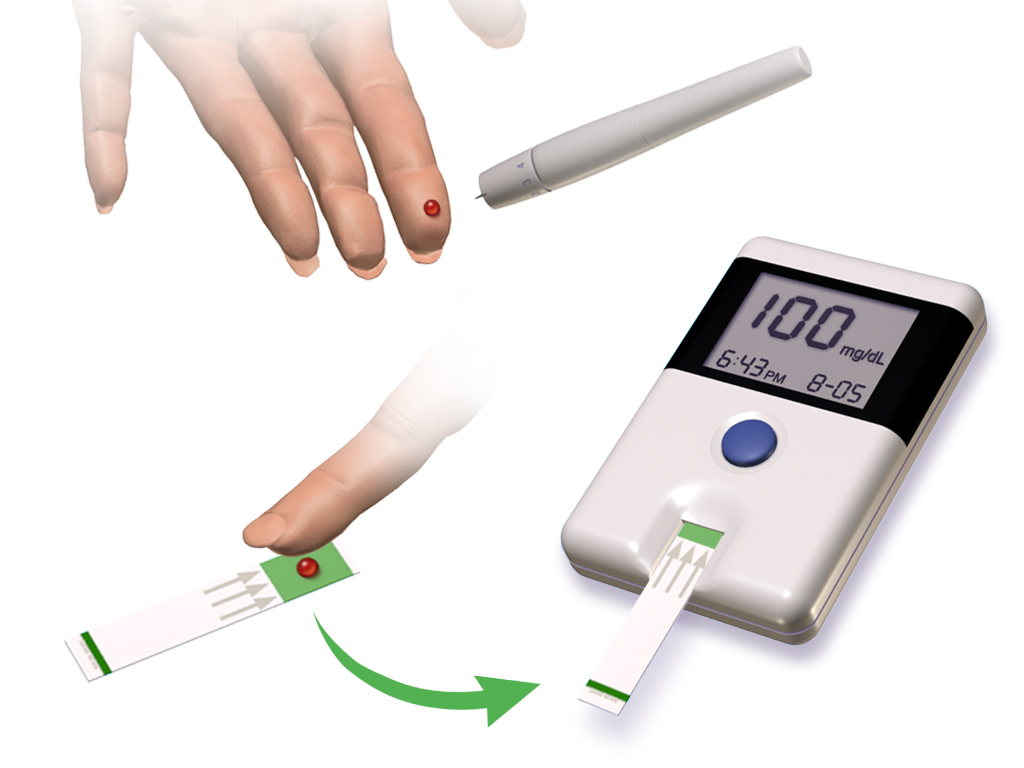Diabetic Exam
Published (updated: ).
Patient With Diabetes Have Lots Of Problems, Start With the Blood Sugar

A glucose meter, also referred to as a “glucometer”, is a medical device for determining the approximate concentration of glucose in the blood. It can also be a strip of glucose paper dipped into a substance and measured to the glucose chart. It is a key element of home blood glucose monitoring (HBGM) by people with diabetes mellitus or hypoglycemia. A small drop of blood, obtained by pricking the skin with a lancet, is placed on a disposable test strip that the meter reads and uses to calculate the blood glucose level. The meter then displays the level in units of mg/dL or mmol/L.
Since approximately 1980, a primary goal of the management of type 1 diabetes and type 2 diabetes mellitus has been achieving closer-to-normal levels of glucose in the blood for as much of the time as possible, guided by HBGM several times a day. The benefits include a reduction in the occurrence rate and severity of long-term complications from hyperglycemia as well as a reduction in the short-term, potentially life-threatening complications of hypoglycemia.
Most glucometers today use an electrochemical method. Test strips contain a capillary that sucks up a reproducible amount of blood. The glucose in the blood reacts with an enzyme electrode containing glucose oxidase (or dehydrogenase). The enzyme is reoxidized with an excess of a mediator reagent, such as a ferricyanide ion, a ferrocene derivative or osmium bipyridyl complex. The mediator in turn is reoxidized by reaction at the electrode, which generates an electric current. The total charge passing through the electrode is proportional to the amount of glucose in the blood that has reacted with the enzyme. The coulometric method is a technique where the total amount of charge generated by the glucose oxidation reaction is measured over a period of time. The amperometric method is used by some meters and measures the electric current generated at a specific point in time by the glucose reaction. This is analogous to throwing a ball and using the speed at which it is travelling at a point in time to estimate how hard it was thrown. The coulometric method can allow for variable test times, whereas the test time on a meter using the amperometric method is always fixed. Both methods give an estimation of the concentration of glucose in the initial blood sample.
The same principle is used in test strips that have been commercialized for the detection of diabetic ketoacidosis (DKA). These test strips use a beta-hydroxybutyrate-dehydrogenase enzyme instead of a glucose oxidizing enzyme and have been used to detect and help treat some of the complications that can result from prolonged hyperglycemia.
